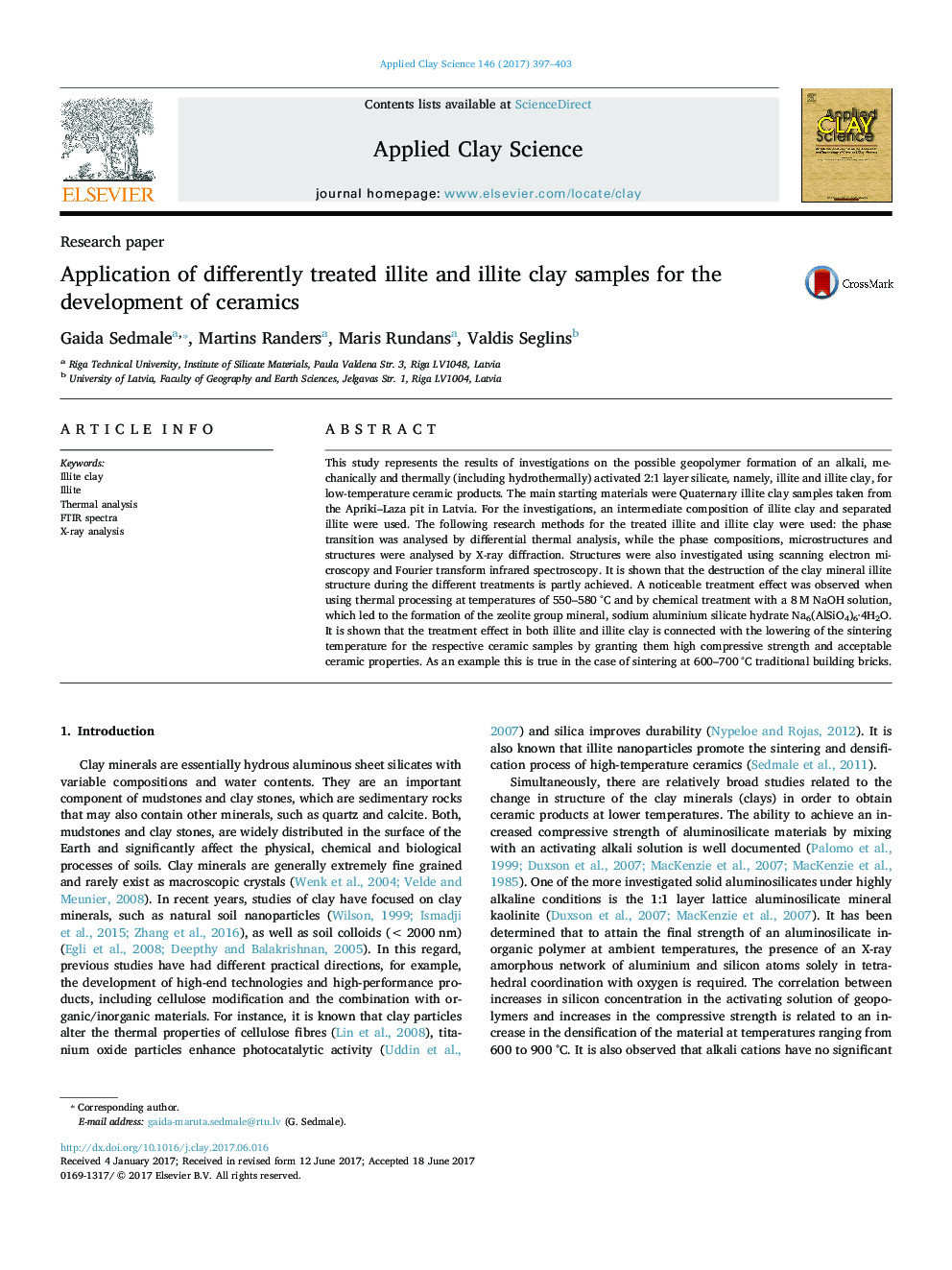| Article ID | Journal | Published Year | Pages | File Type |
|---|---|---|---|---|
| 5468868 | Applied Clay Science | 2017 | 7 Pages |
Abstract
This study represents the results of investigations on the possible geopolymer formation of an alkali, mechanically and thermally (including hydrothermally) activated 2:1 layer silicate, namely, illite and illite clay, for low-temperature ceramic products. The main starting materials were Quaternary illite clay samples taken from the Apriki-Laza pit in Latvia. For the investigations, an intermediate composition of illite clay and separated illite were used. The following research methods for the treated illite and illite clay were used: the phase transition was analysed by differential thermal analysis, while the phase compositions, microstructures and structures were analysed by X-ray diffraction. Structures were also investigated using scanning electron microscopy and Fourier transform infrared spectroscopy. It is shown that the destruction of the clay mineral illite structure during the different treatments is partly achieved. A noticeable treatment effect was observed when using thermal processing at temperatures of 550-580 °C and by chemical treatment with a 8 M NaOH solution, which led to the formation of the zeolite group mineral, sodium aluminium silicate hydrate Na6(AlSiO4)6·4H2O. It is shown that the treatment effect in both illite and illite clay is connected with the lowering of the sintering temperature for the respective ceramic samples by granting them high compressive strength and acceptable ceramic properties. As an example this is true in the case of sintering at 600-700 °C traditional building bricks.
Related Topics
Physical Sciences and Engineering
Earth and Planetary Sciences
Geochemistry and Petrology
Authors
Gaida Sedmale, Martins Randers, Maris Rundans, Valdis Seglins,
